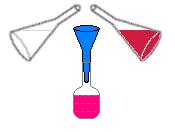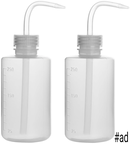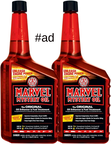How to mix your own Fuel Additive
Are you a believer in using additives to keep your fuel system clean, improving gas mileage, enhancing performance and reducing emissions? Maintaining this practice is rather expensive, unless you mix your own! Acetone, when mixed with an upper-cylinder lubricant and added to gasoline, helps by removing carbon deposits, gum and varnish from the entire fuel system. More importantly, lowers the flash point and increases the rate of combustion. This produces more power since combustion will occur a little closer to top dead center rather than so many degrees after TDC. More fuel will burn on the power stroke, instead of wasted in the exhaust [burning up in the catalytic converter]. The top cylinder lubricant assures that your fuel pump, fuel injectors and cylinder walls receive adequate lubrication. Maintaining a clean fuel system can add several miles per gallon. I personally believe this is every bit as good as, if not better than, products such as Redex or Lucas Fuel Treatment. For best results, treat 2 - 3 consecutive tankfuls.
1. Save an empty long-necked plastic bottle, with a tight-fitting cap, for this purpose. Pour two ounces of upper cylinder lubricant, for every 10 gallons of fuel, into a graduated container. This container can be glass or chemical-resistant plastic. After pouring the required amount into the bottle, mark the level with a sharpie.
2. Add four ounces of Acetone for every 10 gallons of fuel, into the container and mark that level. Adding more will not necessarily increase the benefits and may, in fact, cause some damage over time. Cap the container tightly and shake to mix the oil and chemical solvent thoroughly. If stored for an extended period, the oil and acetone will separate. When properly mixed it will appear pinkish in color.
3. Carefully, pour the entire contents into the gas tank, before filling. Doing this for 2 - 3 consecutive tankfuls will help to maintain a clean/efficient fuel system and a cleaner burning engine. You will find that this practice also helps to lower harmful emissions.
Tips
* Average tank size for cars is 10 - 14 gallons, (6 - 8 cylinder) trucks & vans 24-26 gallons. Mix as 10 or 20 gal.
* Save an empty long-necked additive bottle to store and pour your own additive.
* Buy pure Acetone and lubricant in bulk, to save even more money.
* Add 4 ounces of 90% rubbing alcohol (isopropyl alcohol) for water contaminated fuel to make it burn.
* Change your fuel filter after the first several [treated] tanks, since this additive will dissolve varnish & sludge in the tank.
* Can also be used with Diesel fuel. Warnings
* Use at your own risk!
* Mixing an Acetone ratio stronger than suggested may cause fuel system and O2 sensor damage.
* A stronger ratio may also cause pre-ignition/pinging which can lead to valve and piston damage.
* Be very careful with undiluted Acetone. It is highly flammable and can damage vehicle paint if spilled.
* Undiluted Acetone will cause many plastics to melt or become very brittle, and can instantly dull painted surfaces. Not so, when mixed with a lubricant.
Warnings
* Use at your own risk! * Mixing an Acetone ratio stronger than suggested may cause fuel system and O2 sensor damage.
* A stronger ratio may also cause pre-ignition/pinging which can lead to valve and piston damage.
* Be very careful with undiluted Acetone. It is highly flammable and can damage vehicle paint if spilled.
* Undiluted Acetone will cause many plastics to melt or become very brittle, and can instantly dull painted surfaces. Not so, when mixed with a lubricant.
Copyright 4/10/2010. All Rights Reserved. Questions? Comments? Contact Me
2. Add four ounces of Acetone for every 10 gallons of fuel, into the container and mark that level. Adding more will not necessarily increase the benefits and may, in fact, cause some damage over time. Cap the container tightly and shake to mix the oil and chemical solvent thoroughly. If stored for an extended period, the oil and acetone will separate. When properly mixed it will appear pinkish in color.
3. Carefully, pour the entire contents into the gas tank, before filling. Doing this for 2 - 3 consecutive tankfuls will help to maintain a clean/efficient fuel system and a cleaner burning engine. You will find that this practice also helps to lower harmful emissions.
Tips
* Average tank size for cars is 10 - 14 gallons, (6 - 8 cylinder) trucks & vans 24-26 gallons. Mix as 10 or 20 gal.
* Save an empty long-necked additive bottle to store and pour your own additive.
* Buy pure Acetone and lubricant in bulk, to save even more money.
* Add 4 ounces of 90% rubbing alcohol (isopropyl alcohol) for water contaminated fuel to make it burn.
* Change your fuel filter after the first several [treated] tanks, since this additive will dissolve varnish & sludge in the tank.
* Can also be used with Diesel fuel. Warnings
* Use at your own risk!
* Mixing an Acetone ratio stronger than suggested may cause fuel system and O2 sensor damage.
* A stronger ratio may also cause pre-ignition/pinging which can lead to valve and piston damage.
* Be very careful with undiluted Acetone. It is highly flammable and can damage vehicle paint if spilled.
* Undiluted Acetone will cause many plastics to melt or become very brittle, and can instantly dull painted surfaces. Not so, when mixed with a lubricant.
Warnings
* Use at your own risk! * Mixing an Acetone ratio stronger than suggested may cause fuel system and O2 sensor damage.
* A stronger ratio may also cause pre-ignition/pinging which can lead to valve and piston damage.
* Be very careful with undiluted Acetone. It is highly flammable and can damage vehicle paint if spilled.
* Undiluted Acetone will cause many plastics to melt or become very brittle, and can instantly dull painted surfaces. Not so, when mixed with a lubricant.
Copyright 4/10/2010. All Rights Reserved. Questions? Comments? Contact Me


